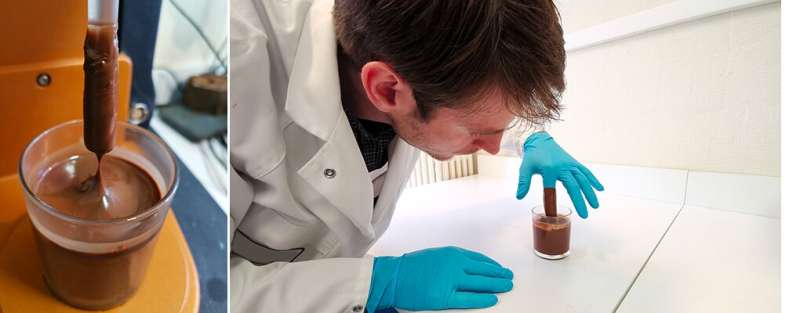Dip-coating: How to predict the thickness of thin films?

The immersion method of applying a coating to an object presents a central challenge: predicting the thickness of the layer that will cover the object. This question raises important financial issues for manufacturers. A team from the CBI laboratory at ESPCI Paris and from the College de France has developed an experimentally verified theoretical framework to predict the coating thickness in the case of yield-stress fluids. The researchers just reported their findings in the journal Physical Review Letters.
To cover an object with a liquid coating, the object is often immersed into a fluid reservoir and then pulled out. This technique, known as dip-coating, has been previously studied both experimentally and numerically when the fluid has a yield stress (such as paints, gels, glues, foams or creams), but a complete description of the behavior has been lacking. The researchers addressed this problem by studying a model system in which axial symmetry plays an important role. It involves plunging a cylindrical rod into a cylindrical bath. They showed that the thickness of the deposited coating results from the fluid flow induced by the movement of the rod. However, this flow depends mainly on the geometry and dimensions of the reservoir. For yield-stress fluids, it is therefore the geometry of the bath that determines the thickness of the deposited film (the dimensions of the withdrawn object also being an important factor).
These experimental results are in line with numerical calculations of the fluid mechanics. This work will undoubtedly interest manufacturers who use the dip-coating process to apply coatings, whether they are paints, cements, gels or even chocolate (the researchers' favorite).
More information: W. J. Smit, C. Kusina, J.-F. Joanny, A. Colin, Stress field inside the bath determines dip coating with yield-stress fluids in cylindrical geometry, Phys. Rev. Lett. 123, 30 Sept.2019, journals.aps.org/prl/abstract/ … ysRevLett.123.148002
Journal information: Physical Review Letters
Provided by ESPCI Paris




















